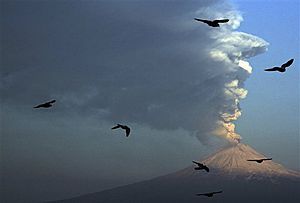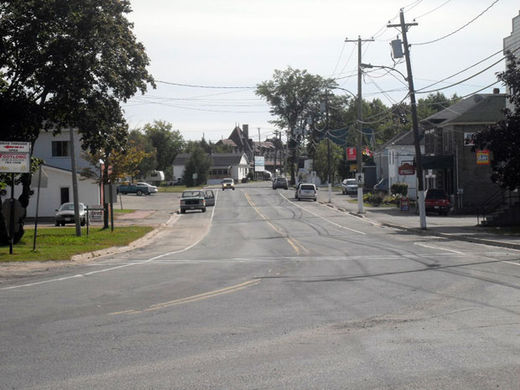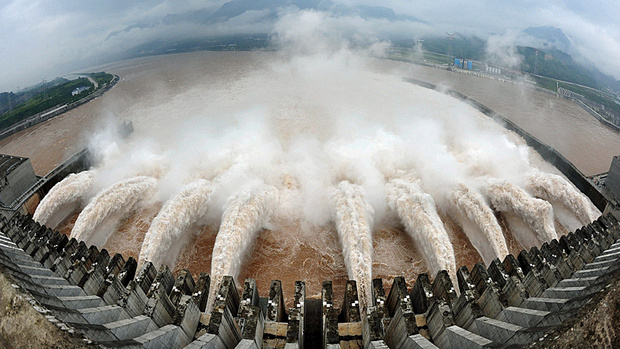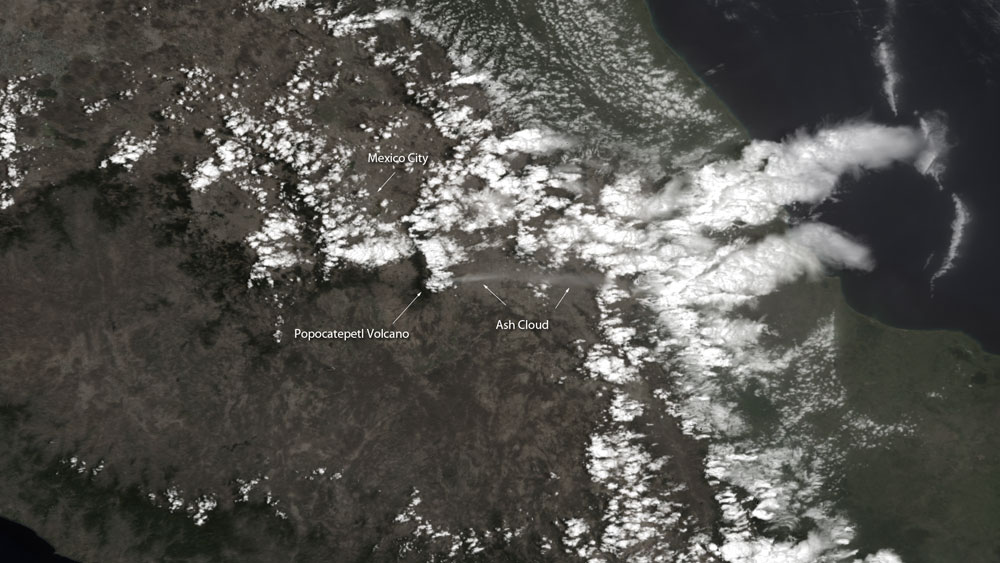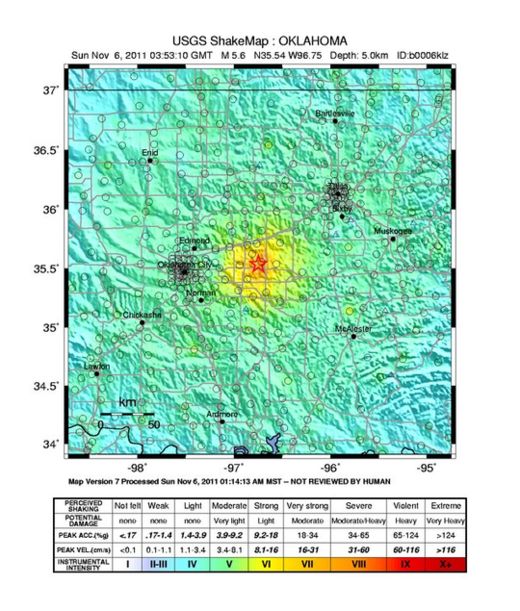
© USGSMap of shaking intensity from the magnitude 5.6 earthquake that hit Oklahoma on Nov. 5, 2011.
San Diego - On the night of Nov. 5, 2011, as midnight approached, a magnitude-5.6 earthquake rocked central Oklahoma, the state's most powerful quake ever recorded. The shaking injured two people, destroyed 14 homes, and bent a local stretch of highway.
Research presented here at the annual meeting of the Seismological Society of America today (April 18) suggests the
quake could be related to an industrial practice of injecting fluids
deep into the Earth.
"This is part of a growing number of cases of earthquakes caused by fluid injection - and if it was found to be linked, this would be the largest," said Steve Horton, a research scientist at the University of Memphis's Center for Earthquake Research and Information.
There are three wells within 3 miles (5 kilometers) of the main shock location that are actively injecting fluids nearly a mile (1.3 km) down into the subsurface, Horton told OurAmazingPlanet.
"They are not doing fracking," Horton emphasized. Fracking, or hydraulic fracturing, a practice used to extract natural gas from deep rocks, has been much in the national consciousness lately; some have tried to link the practice to earthquakes, though no such evidence has surfaced, said scientists gathered at the SSA.
"We simply do not see that there is a connection between hydrofracking and earthquakes that are of any concern to society," William Ellsworth, a seismologist with the U.S. Geological Survey said during a media briefing.
